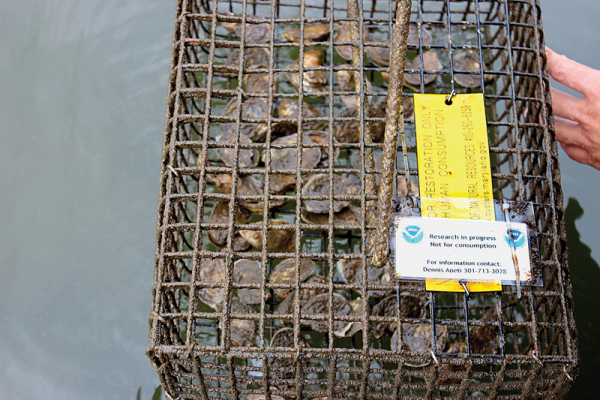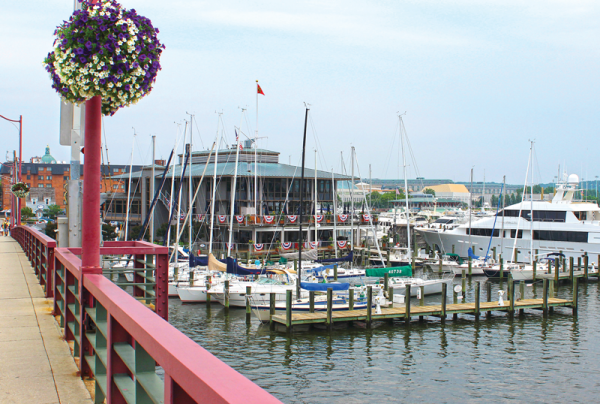This summer, the Annapolis YC (AYC) is helping the National Oceanic and Atmospheric Administration (NOAA)’s National Centers for Coastal Ocean Science with a new study being conducted as part of NOAA’s Mussel Watch program. The goal of the study is to help scientists understand the distribution of current-use pesticides, pharmaceuticals, personal care products, and other chemicals associated with human activity that may bioaccumulate in oyster tissue.
Due to its location at the mouth of Spa Creek in an urbanized Severn River tributary, the club was well-situated for such a study. AYC was also chosen because of its advocacy for water quality and oyster restoration in the past.
With help from Maryland’s Department of Natural Resources (DNR), the study’s organizers were able to identify three suitable survey areas for each of the four areas of the Chesapeake Bay being studied: the Severn River representing an urban area, Patapsco River representing an industrial area, the lower Choptank River representing agricultural land-use, and the Rhode River representing undeveloped sites.
Dr. Dennis Apeti, one of the scientists, explained that the Mussel Watch program uses bivalves, such as oysters, to monitor organism health and the presence of more than 150 chemical pollutants at approximately 300 coastal locations nationwide, 14 of which are located within the Chesapeake Bay. With this new study’s targeted locations, NOAA is hoping the study will help to better conduct a survey of contaminants of emerging concern.
For the past three years, AYC has been an avid supporter, spat (juvenile oyster) distributor, and participant in local oyster programs, including Marylanders Grow Oysters and Severn River Oyster Growers Association.
Annually in September, employees of AYC’s Dockmaster’s Office affix 80 to 100 cages onto the club’s docks. Each cage contains spat and recycled oyster shells donated by AYC members. With the exception of periodic fresh water rinsing and monitoring by staff, the spat are left to mature in their cages until late June, at which time they are taken to the oyster sanctuary located by the Route 450/Baltimore Annapolis Boulevard Bridge on the Severn River.
Oyster habitation programs and studies such as the one conducted by NOAA, are important to AYC and its members, who work to give back to the marine environment. The club is certified as a Maryland Clean Marina and has a membership with the Spa Creek Conservancy.
“Being a yacht club that relies on the Chesapeake Bay as an important resource, I believe it’s critical for the club to lead the oyster recovery efforts,” states general manager Brian Asch.
AYC helped to deploy the research cages on Wednesday, June 24, and each month, the cages will be rinsed with site water to clean off algae that has grown on the enclosures, while Dr. Apeti and fellow scientist, A.K. Leight, periodically sample the oysters for laboratory analysis. At the end of August, the cages will be removed from AYC’s dock and taken back to their lab for further analysis. Results of the study will be made available to the volunteers, stakeholders, and public via NOAA’s web portal at egisws02.nos.noaa.gov/nsandt/index.html






